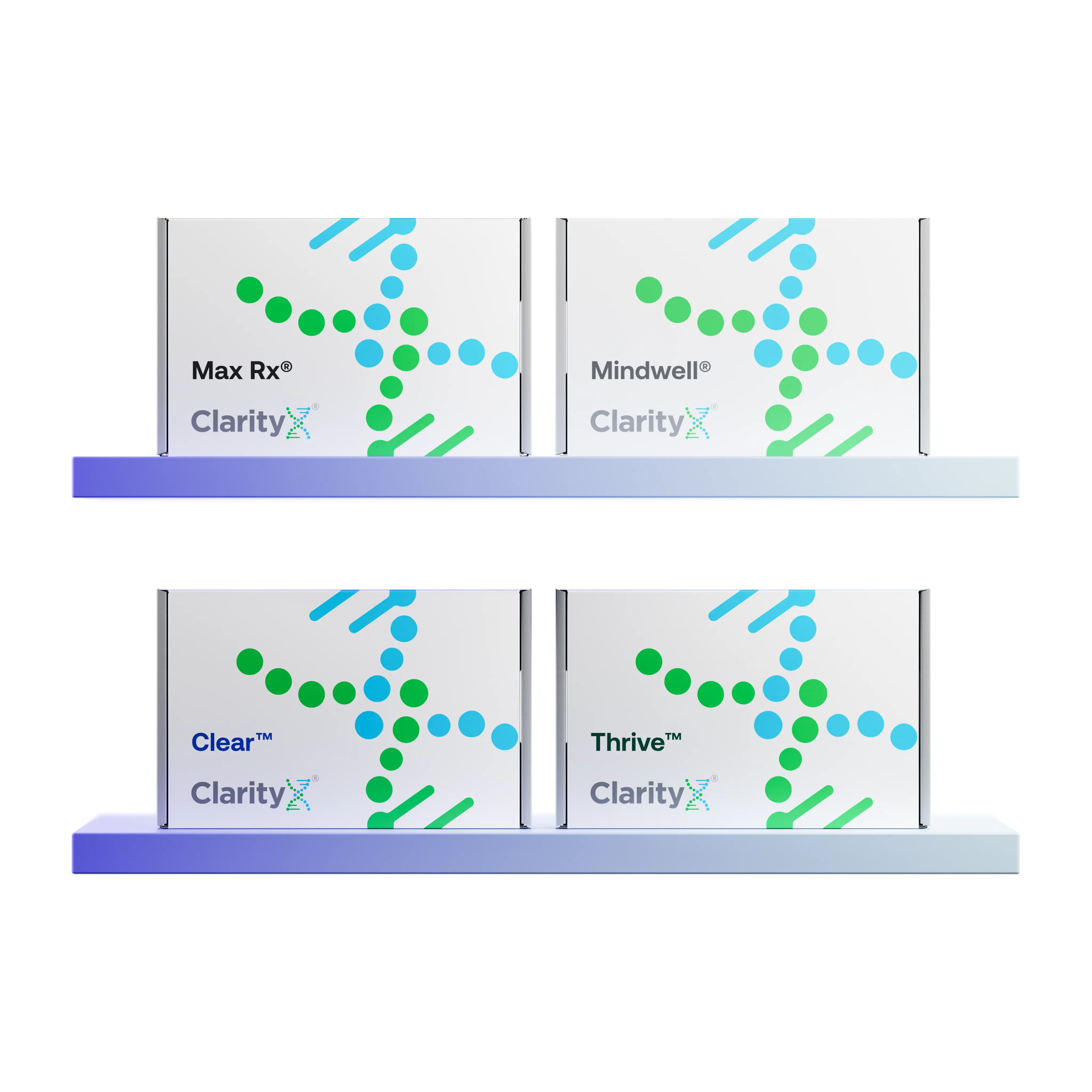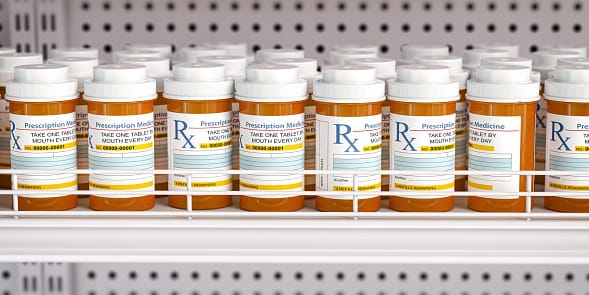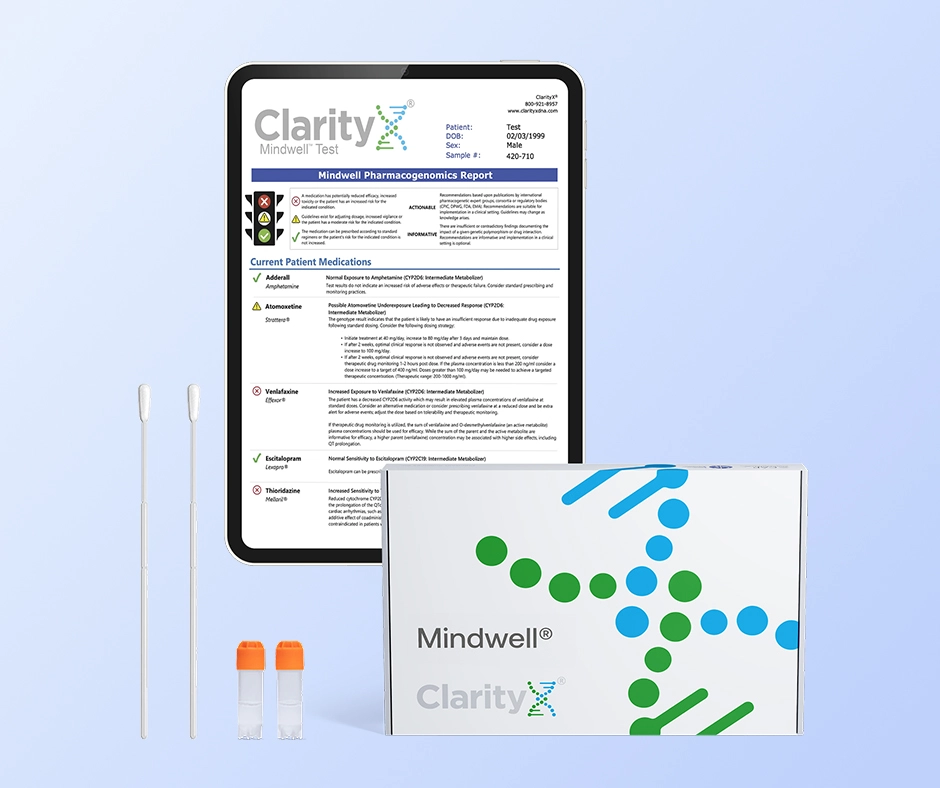Read our guide on Citalopram® vs. Lexapro® to learn more about their side effects, dosage requirements, and how to choose between them.
Citalopram® vs. Lexapro®
Anxiety and depression are two of the most common mental health issues in young adults. Anxiety is characterized by intense, excessive worrying, while depression involves poor mood and a lack of motivation. While these conditions may seem conflicting, they often occur together — in fact, about 50% of people suffering from depression also have an anxiety disorder.
If left untreated, both anxiety and depression can worsen and start to interfere with all aspects of life. The good news is, there are medications available that can lower symptoms by altering chemicals in the brain. Two popular treatments are citalopram and Lexapro. Read on to learn more about the difference between citalopram and Lexapro and how to choose the best medication for your health.
Citalopram vs. Lexapro For Anxiety and Depression
Citalopram is a generic drug that can be found under brand names (the most common brand being Celexa). On the flip side, Lexapro is a branded version of escitalopram. Let’s compare citalopram and Lexapro and review how effective they are in treating major depressive disorder and anxiety.
Depression
Citalopram and Lexapro both belong to a class of antidepressants called selective serotonin reuptake inhibitors (SSRIs). They work by increasing the levels of a hormone called serotonin. Found throughout the central nervous system, serotonin is responsible for the following:
- Stabilizing mood
- Boosting happiness and satisfaction
- Enhancing digestion
- Improving sleep
Citalopram and Lexapro are both FDA-approved for treating major depressive disorder.
Anxiety
Although SSRIs are designed to treat depression, they’re also effective in reducing anxiety symptoms. People with anxiety often struggle with the following:
- Intrusive thoughts
- Excessive stress
- Disrupted sleep
- Stomach problems
Increased levels of serotonin can improve mood, sleep, and digestion — thus, it’s no surprise that SSRIs can help with anxiety. However, while both Celexa and Lexapro have seen positive results, only Lexapro is FDA-approved for anxiety.
Citalopram vs. Lexapro: Common Side Effects
As serotonin levels increase, you may feel some adverse effects as your body adjusts to the change. Whether you’re taking citalopram or Lexapro, it’s normal to experience the following:
- Fatigue and exhaustion
- Nausea and weakness
- Stomach problems (including pain and constipation)
- Sexual side effects (such as lowered libido)
- Increased risk of suicidal thoughts
Both antidepressants also have their own unique consequences for mental health changes. For example, citalopram may cause arrhythmia or irregular heartbeats. Meanwhile, Lexapro has been linked to sleep and taste problems.
While side effects are common, they should go away as your body gets used to the drug (which usually takes around four to six weeks). If adverse effects remain or worsen, you may need to either switch your medication or alter your dosage.
Citalopram vs. Lexapro: Dosage
Citalopram and Lexapro might be used to treat similar conditions, but they cannot be interchanged. This is because they have different potencies, acting speeds, and half-lives. Let’s take a closer look at these factors and how they can affect the way you interact with medication.
Potency
Potency refers to how strong a drug is. Usually, healthcare providers start off with a small dose, then increase it as patients get used to the drug. The recommended doses for Lexapro and Celexa are as follows:
- Lexapro: 10 mg/daily (can be increased to 20 mg)
- Celexa: 20 mg/daily (can be increased to 40 mg)
10 mg of Lexapro is about twice as strong as 10 mg of Celexa. The former can be found in tablets and oral solutions, while the latter is only available in tablet form.
Acting speed
Acting speed refers to how long it takes before a drug kicks in and you start to feel its effects. The speed may influence what time of day you take your medication — for example, if a drug has a slow-acting speed, you’ll want to take it earlier. For a starting dose of Lexapro and Celexa, speeds are as follows:
- Lexapro: Three to four hours
- Celexa: One to six hours
Most users feel the effects of Lexapro after a few hours. However, Celexa can take anywhere from one to six hours to activate.
Half-Life
A drug’s half-life refers to the length of time it takes for about 50% of the drug to be flushed from your system. At this point, the medication will be far less effective (unless you take another dose). The half-lives of Lexapro and Celexa are as follows:
- Lexapro: 27 to 32 hours (about 6 days to fully exit the body)
- Celexa: 36 hours (about 7 days to fully exit the body)
While they have similar half-lives, Celexa can last slightly longer than Lexapro.
Frequently Asked Questions About Citalopram and Lexapro
Here are a few commonly asked questions about these SSRIs (selective serotonin reuptake inhibitors).
Are citalopram and Lexapro interchangeable?
As mentioned earlier, citalopram (Celexa) and Lexapro have different potencies — thus, they cannot be interchanged. If you want to switch from one medication to the other, you have to adjust the dosage accordingly. However, the two different medications have similar acting speeds and half-lives, which can help make transitions go smoothly.
Can citalopram and Lexapro be used together?
Since citalopram and Lexapro are both SSRIs (selective serotonin reuptake inhibitors), there are no discernible benefits to using them together. In fact, taking both drugs at once can actually increase your risk of adverse effects. When prescribing multiple antidepressants, healthcare providers typically use different types of antidepressants. In addition to SSRIs, these include:
- Serotonin and norepinephrine reuptake inhibitors (SNRIs)
- Tricyclic antidepressants (TCAs)
- Monoamine oxidase inhibitors (MOAIs)
- Atypical antidepressants
Every class of antidepressants affects specific neurotransmitters or chemicals in the brain. In theory, taking antidepressants from different classes can lower depression and anxiety symptoms by impacting a wide range of neurotransmitters. If you’re curious about combining medications, speak with your healthcare provider about the possible risks.
Which medication is better for me?
Since citalopram and Lexapro share so many similarities, it can be difficult to decide which drug to take. Most doctors will play a game of trial and error that involves prescribing a drug, waiting to see the effects, then either adjusting the dosage or changing the medication altogether. Unfortunately, this process takes time and forces patients to endure potentially painful adverse effects.
To avoid the burdensome trial and error game, more and more people are turning to pharmacogenetic testing. Also known as genetic testing, it uses your DNA to help you make better choices about your health.
DNA Testing for Citalopram and Lexapro
Inside every DNA molecule lies genes that are responsible for passing down traits, managing cells, and creating proteins called enzymes. One of these enzymes — cytochrome 450 (CYP450) — is in charge of metabolizing over 70% of clinically used drugs.
When healthcare providers prescribe medications, they rarely take into account the unique way your CYP450 enzyme breaks down certain drugs. For example, some people metabolize SSRIs (selective serotonin reuptake inhibitors) too slowly, which increases the risk of sexual side effects. Others metabolize them too quickly, which makes drugs less effective.
By evaluating your genetic material for variations that affect your CYP450 enzyme, genetic testing for depression can determine how your body will react to drugs like citalopram and Lexapro. This information tells you whether you need to increase your dosage, decrease it or try a new medication.
Where Can I Find DNA Testing?
You can reap the benefits of DNA testing by contacting our team at ClarityX. After registering online, you’ll receive a simple, at-home cheek swab test. Once testing is complete, you’ll enjoy a full, personalized report detailing your response to a variety of generic and brand-name drugs. Before registering, choose between our test kits: Mindwell and Max Rx.
Mindwell
If your goal is to choose between Lexapro and citalopram, then the Mindwell test is the best choice. It focuses on mental health conditions (such as major depressive disorder, anxiety, ADHD, OCD, and bipolar disorder) and evaluates your response to the following:
- Antidepressants
- Antipsychotics
- Anxiolytics
- SSNRIs and SSRIs
You can learn more by visiting our Mindwell page.
Max Rx
If you want to discover how you react to medications across 31 therapeutic areas (including psychiatry, cardiology, oncology, and immunology), then the Max Rx test is for you. It predicts your response to over 265 FDA-approved medications, including:
- Lexapro/escitalopram
- Celexa/citalopram
- Prozac/fluoxetine
- Zoloft/sertraline
You can learn more by visiting our Max Rx page.
Get a DNA Test Today!
At ClarityX, we believe that no patient should have to try out various medications just to find one that works for them. Through highly accurate genetic testing, we can determine how you’ll interact with certain medications and help you make the best possible choice for your health. Get started by buying a kit today.






